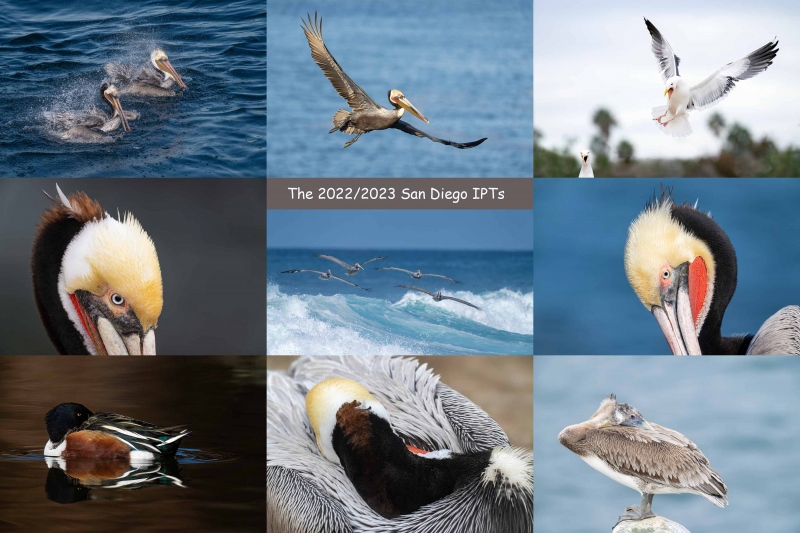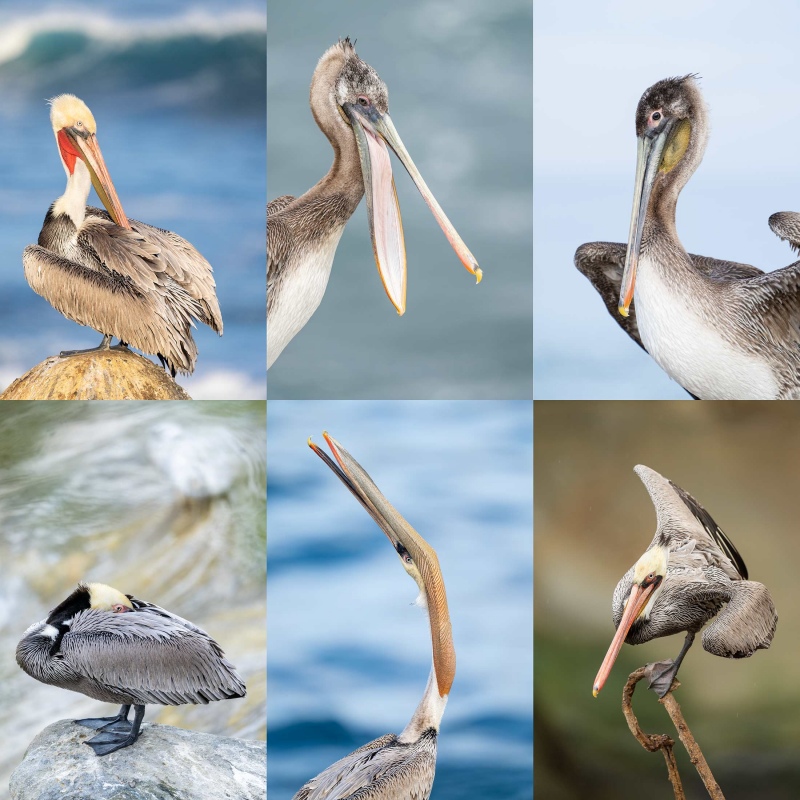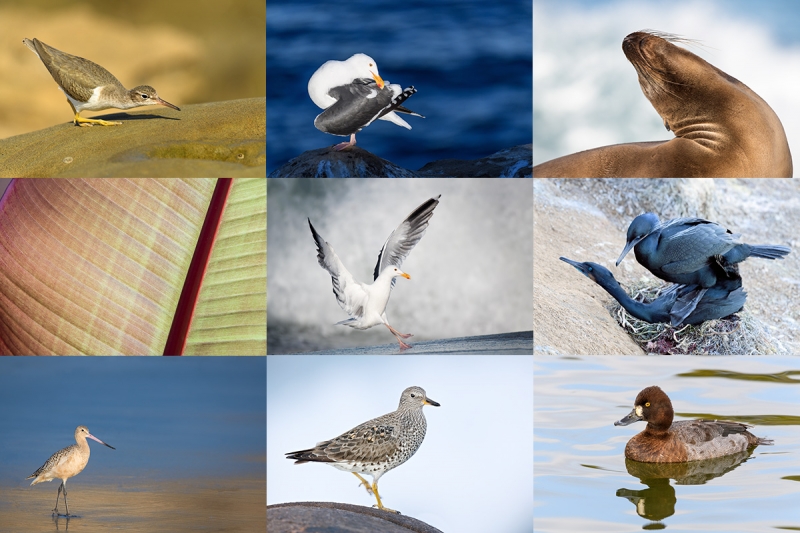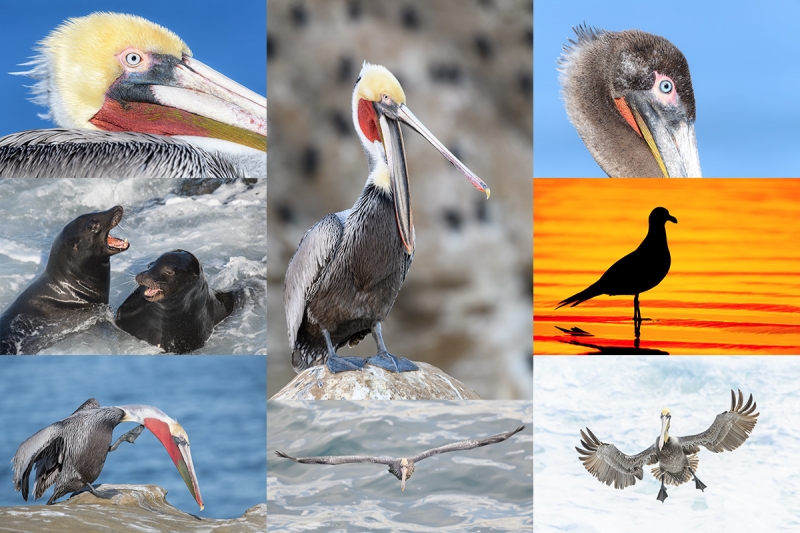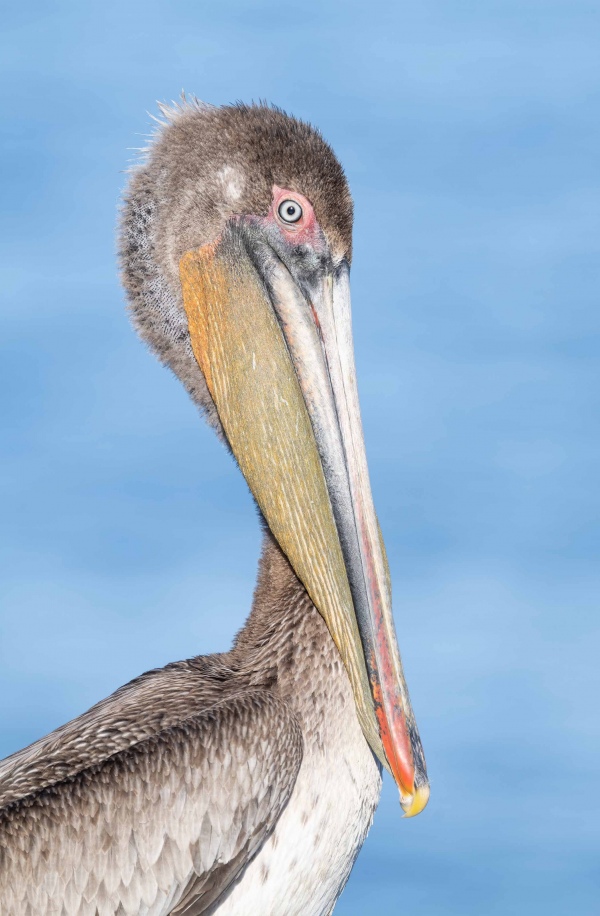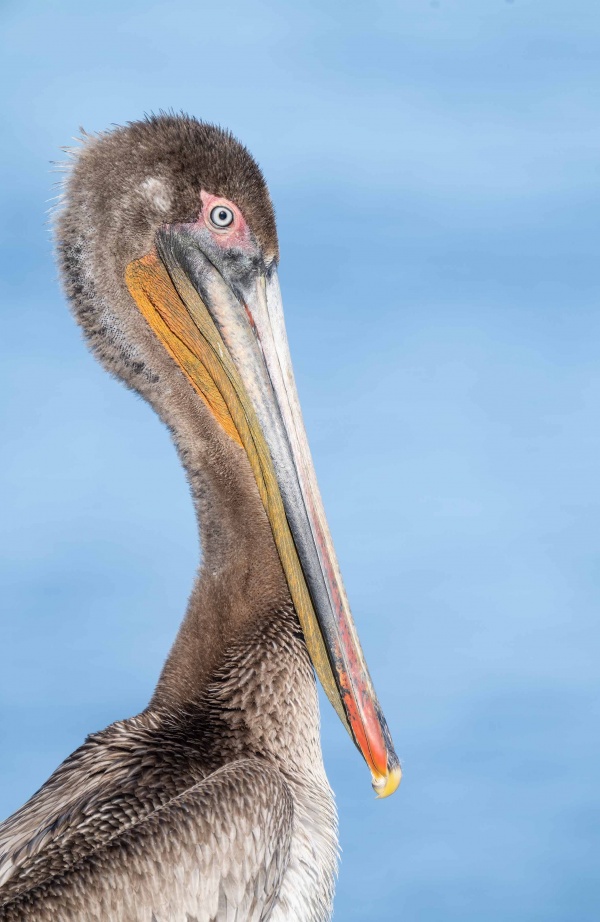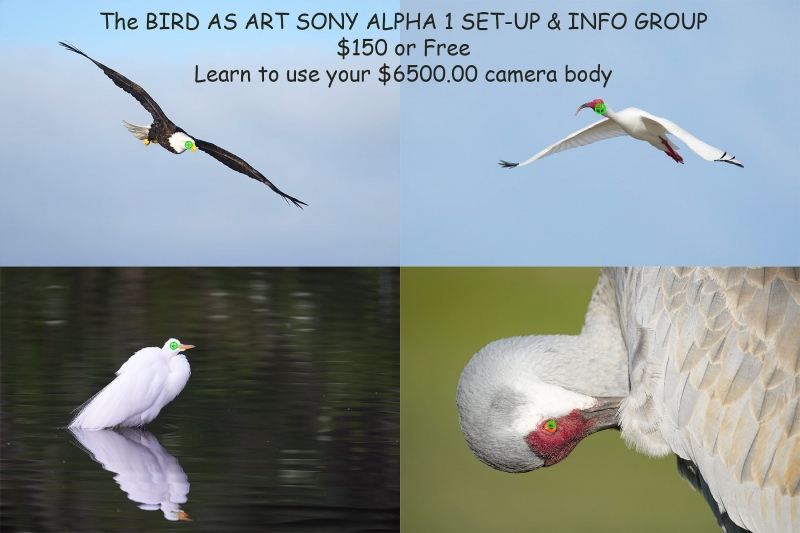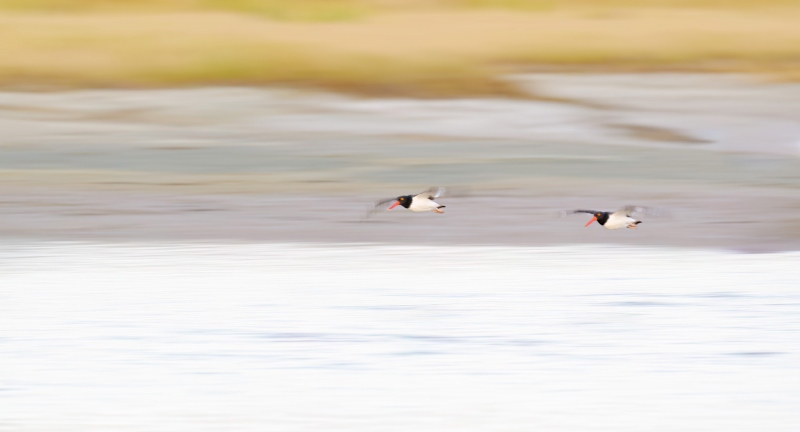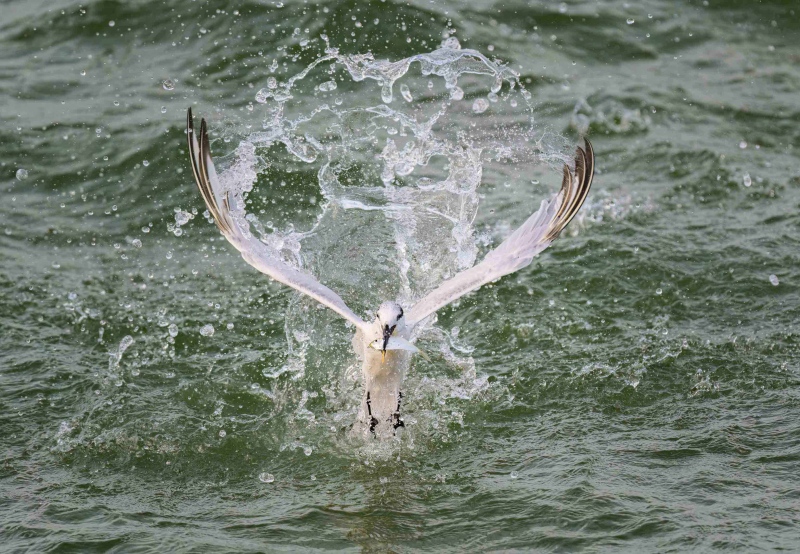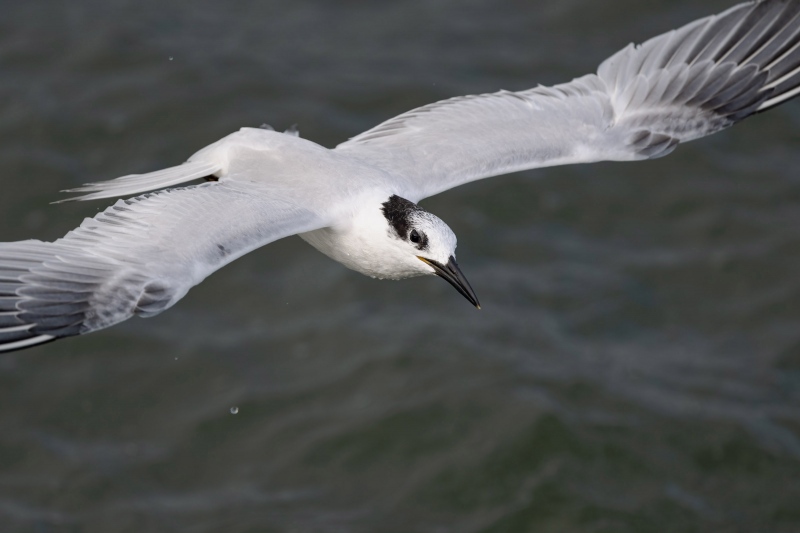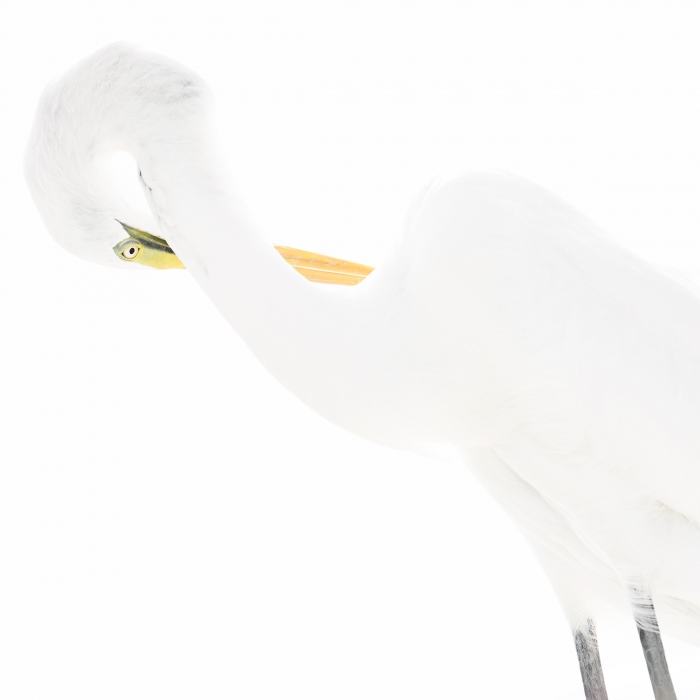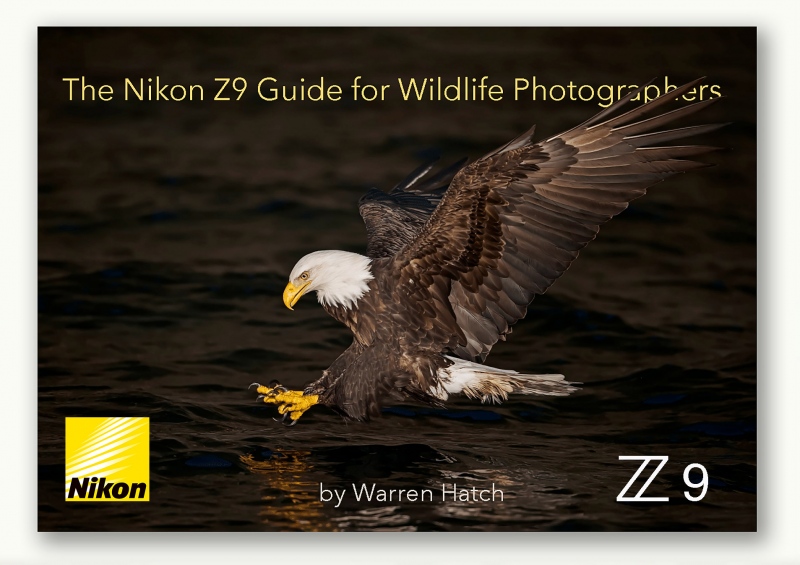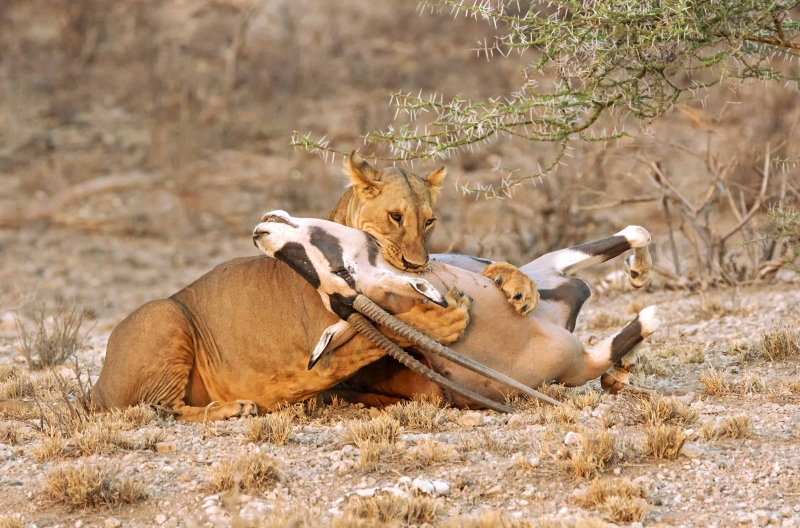San Diego IPT #3 Changes
With five slots filled on the second (4 1/2 day) San Diego IPT, and nobody onboard for the third San Diego IPT (formerly 3 1/2 days), the third IPT will now begin on THURS 19 JAN 2023, a day earlier than previously scheduled. Like #2, it will run for 4 1/2 days. Sign up for that one (or for #1), to enjoy a practically private IPT
|
|
|
This all-new card includes images created on my JAN 2022 visit to San Diego. Click on the composite to enjoy a larger version. |
The 2022/23 San Diego Brown Pelicans (and more!) IPTs
San Diego IPT #1. 3 1/2 DAYS: WED 21 DEC thru the morning session on Saturday 24 DEC 2022. $2099.00. Deposit: $699.00. Limit: 6 photographers/Openings: 5.
San Diego IPT #2. 4 1/2 DAYS: SAT 7 JAN thru the morning session on WED 11 JAN 2023: $2699.00. Deposit: $699.00. Limit: 6 photographers/Openings: 1.
San Diego IPT #3: 4 1/2 DAYS: THURS 19 JAN thru the morning session on MON 23 JAN 2023: $2699.00. Deposit: $699.00. Limit: 6 photographers.
Please e-mail for information on personalized pre- and post-IPT sessions.
Join me in San Diego to photograph the spectacular breeding plumage Brown Pelicans with their fire-engine red and olive green bill pouches; Brandt’s (nesting) and Double-crested Cormorants; breeding plumage Wood and Ring-necked Ducks; other duck species possible including Lesser Scaup, Redhead, Northern Shoveler and Surf Scoter; a variety of gulls including Western, California, and the gorgeous Heermann’s, all in full breeding plumage; shorebirds including Marbled Godwit, Willet, Sanderling and Black-bellied Plover; many others are possible including Least, Western, and Spotted Sandpiper, Whimbrel, Black and Ruddy Turnstone, Semipalmated Plover, and Surfbird; Harbor Seals and California Sea Lions (both depending on the current regulations and restrictions). And as you can see by studying the IPT cards, there are some nice bird-scape and landscape opportunities as well. Not to mention a ton of excellent flight photography opportunities and instruction.
Please note: where permitted and on occasion, ducks and gulls may be attracted (or re-located) with offerings of grains or healthy bread.
|
|
|
San Diego offers a wealth of very attractive natural history subjects, including and especially the Pacific race of California Brown Pelican. With annual visits spanning more than four decades, I have lots of photographic experience there … Click on the composite to enjoy a larger version. |
Learning Exposure, Whether You Like It Or Not
Whether you like it or not, we will be beating the subject of exposure like a dead horse. In every new situation, you will hear my thoughts on exposure along with my thoughts on both Nikon and Canon histograms and SONY Zebras. Whether you like it or not, you will learn to work in manual mode so that you can get the right exposure every time (as long as a bird gives you ten seconds with the light constant). Or two seconds with SONY zebras … And you will learn what to do when the light is changing constantly. What you learn about exposure will be one of the great takeaways on every IPT.
|
|
|
Though the pelicans will be the stars of the show on this IPT, there will be many other handsome and captivating subjects in wonderful settings. Click on the composite to enjoy a larger version. |
It Ain’t Just Pelicans
With gorgeous subjects just sitting there waiting to have their pictures taken, photographing the pelicans on the cliffs is about as easy as nature photography gets. With the winds from the east almost every morning there is usually some excellent flight photography as well, often with 70-200mm lenses! And the pelicans are almost always doing something interesting: preening, scratching, bill pouch cleaning, or squabbling. And then there are those crazy head throws that are thought to be a form of intra-flock communication. You will be guided as to how to make the best of those opportunities. Depending on the weather, the local conditions, and the tides, there are a variety of other fabulous photo chances available in and around San Diego.
|
Did I mention that there are lots of great birds and natural history subjects in San Diego in winter? Click on the composite to enjoy a larger version. |
The San Diego Details
These IPTs will include four or five 3-hour morning photo sessions, three or four 1 1/2-hour afternoon photo sessions, and three or four working brunches that will include image review and Photoshop sessions. On rare cloudy days, we may — at the leader’s discretion, stay out in the morning for a long session and skip that afternoon. To ensure early starts, breakfasts will be your responsibility. And so that we can get some sleep, dinners will be on your own as well. In the extremely unlikely event that Goldfish Point is closed due to local ordinance (or whimsy) — that has never happened in the past fifty years, I will of course do my very best to maximize our photographic opportunities.
|
|
|
San Diego offers a wealth of very attractive natural history subjects, including and especially the Pacific race of California Brown Pelican. With annual visits spanning more than four decades, I have lots of photographic experience there … Click on the composite to enjoy a larger version. |
Deposit Info
A $699 deposit is required to hold your slot for one of the 2022/23 San Diego IPTs. You can send a check (made out to “BIRDS AS ART”) to us here: BIRDS AS ART, PO Box 7245, Indian Lake Estates, FL, 33855, or call Jim or Jennifer at the office with a credit card at 863-692-0906. Your balance, payable only by check, is due three months before the trip.
|
Variety is surely the spice of life in San Diego. Click on the composite to enjoy a larger version. |
Getting Up Early and Staying Out Late
On all BIRDS AS ART IPTS including and especially the San Diego IPT, we get into the field early to take advantage of unique and often spectacular lighting conditions and we stay out late to maximize the chances of killer light and glorious sunset silhouette situations. We often arrive at the cliffs a full hour before anyone else shows up to check out the landscape and seascape opportunities.
What’s Up?
After a delayed but otherwise blessedly uneventful flight to Dallas/Love Field, the drive to the west shore of Lake Hefner took about four hours with pit stops. The water levels are the lowest in fifteen years with acres of exposed red dirt turning to mud as you approach the shoreline. The living birds — American White Pelicans and Ring-billed and Franklin’s Gull, were impossible to approach. It was much easier to get close to the dead birds. Blog post soon on those.
I checked into the Photocon hotel, the Embassy Suites Northwest Parkway in OKC, at about 7:45pm, threw my stuff in the room, and had dinner at a nearby Outback Steakhouse.
Thanks to Bob Eastman and Guido Bee for leaving comments on Matthew Milnes’ fine Z9 images from the 2nd DeSoto IPT. I will share my two favorites tomorrow. What were yours? Click here to contribute. Then consider today’s two featured images and let us know what you think.
A First for Me!
Today is Friday 21 October 2021. For the first time in my life, I am having a formal headshot done. I will be sitting (if you would), for Pam Stukenborg, owner/photographer at Stukenborg Photo in Tulsa, OK, during her OKC PhotoCon program, Headshots and Banker Hours. Wherever you are, and whatever you are doing, I hope that you too have a great day. This blog post took about an hour to prepare and makes two hundred-nine days in a row with a new one.
Please remember to use the B&H and Amazon links that are found on most blog pages and to use the BIRDSASART discount code at checkout when purchasing your new gear from Bedfords to get 3% back on your credit card and enjoy free second-day air FedEx. Please, also, consider joining a BAA IPT. You will be amazed at how much you will learn!
Homer IPT Multiple Trip Discounts Increased
Save $1,500.00 by doing back-to-back trips. Save $2500 by doing all three trips. If you sign up with a friend or a spouse, please e-mail for couples’ discount info.
On Getting Better
Consider joining me on a BIRDS AS ART Instructional Photo-Tour (IPT). The DeSoto, San Diego, Homer, and the yet-to-be announced July 2023 Jacksonville and July 2024 Galapagos Photo-Cruise of a Lifetime all offer the opportunity for you to dramatically improve your skills both in the field and at the computer and to make some astounding images as well. Click here and see which IPT might be best for you.
Attention NANPA Members
If you are currently a NANPA member who enjoys and benefits from your membership and would like to see the organization grow and improve, please contact me via e-mail on a matter of urgent importance.
What a Difference 43 Seconds (or less) Can Make
|
|
|
This image was created on 22 January 2022 on an Instructional Photo-Tour (IPT) at La Jolla, CA. I used the hand held Sony FE 200-600mm f/5.6-6.3 G OSS lens with the Sony FE 1.4x Teleconverter (at 766mm) with The One, the Sony a1 Mirrorless Camera ISO 640. Exposure determined via Zebras with ISO on the Thumb Wheel: RawDigger showed that the exposure was perfect: 1/1000 sec. at f/9 (wide open) in Manual mode. AWB at 8:57:56am on a sunny morning. Tracking: Spot S/AF-C with Bird Eye/Face Detection enabled performed perfectly. Image #1: Brown Pelican Pacific race — 2-year-old image |
Sony 200-600 /w1.4X TC!
As seen here previously, the Sony 200-600 G lens with the 1.4X TC paired with the Alpha 1 is deadly on birds, particularly when the sun is shining. It is light enough for most folks to handhold for extended periods, and offers a zoom range of 280-840mm. Since you will be at f/9 wide open at the long end, you will need to use some high ISOs on cloudy days to achieve the shutter speeds needed for bird photography. But, as we have seen here recently, folks are routinely creating usable images at ridiculously high ISOs — from 10000 to as high as 32000. This rig is tough to beat when photographing the pelicans at La Jolla as it combines great reach with the ability to zoom out when needed. For static subjects, especially in low light conditions, get the rig on a tripod for sharped images at lower ISO settings. Remove the TC and you can zoom out to 200mm for bird-scapes.
Sorry Canon folks — the Sony 200-600 slays the RF 100-500 every which way but Sunday. The greater reach and a wider aperture are the two primary advantages.
|
|
|
This image of the same bird was created on 22 January 2022 on an Instructional Photo-Tour (IPT) at La Jolla, CA. I used the hand held Sony FE 200-600mm f/5.6-6.3 G OSS lens with the Sony FE 1.4x Teleconverter (at 840mm) with The One, the Sony a1 Mirrorless Camera ISO 640. Exposure determined via Zebras with ISO on the Thumb Wheel: RawDigger showed that the exposure was perfect: 1/1000 sec. at f/9 (wide open) in Manual mode. AWB at 8:58:39am on a sunny morning. Tracking: Spot S/AF-C with Bird Eye/Face Detection enabled performed perfectly. Image #2: Brown Pelican Pacific race — 2-year-old image |
The Advantages of High Frame-rate Camera Bodies
At times, I run across bird photographers on IPTs (or otherwise) using less than the highest frame-rate that their cameras offer for bird photography. They say, “I do not want to have to go through so many images.” In almost all circumstances, this seems insane to me. Though today’s two featured images were created 43 seconds apart, they might have been created just one second apart, or even in the same second. With the a1 we get 30 images in every single second. Even when photographing a seemingly static subject, one or two images in a series will almost always stand out as best. And when shooting birds in flight and in action, almost every single frame will be distinctly different. Using Photo Mechanic to pick your keepers enables you to edit session or day folders with thousands of images in less than 30 minutes, far less as your skills improve.
Crank that puppy up to the max and fire away when the bird or birds are moving.
Your Call?
Which of Today’s two featured images is the strongest? I have a clear choice, but I am betting that not everyone will agree.
|
|
|
Click on the image to better see the green eye-AF boxes in action. Sony Alpha 1 Flight Photography AF Points! |
The SONY Alpha a1 Set-up Guide and Info Group: $150.00 (or Free)
The SONY Alpha a1 Set-up Guide and Info Group is going great guns as more and more folks chime in with thoughtful questions and experience-based answers. As the a1 is becoming more readily available, more and more folks are getting their hands on this amazing body. The group is now up to up to an astounding 131 lucky and blessed folks, and more than a few folks own two or more a1 bodies! Early on, we discussed the myriad AF options. I gave my opinion as to the best one for flight and general bird photography. The best news is that everyone in the group receives an e-mail that includes a .DAT file with my a1 settings on it, and explicit directions on how to load my settings onto your a1; talk about convenience! I am now offering a .DAT file compatible with firmware update 1.20. Your entry into the group includes a consolidated Sony a1 CAMSETA2 INFO & GUIDE. New a1 folks will now receive six e-mails instead of the previous 28! You will receive new e-mails as they are published. Simply put, this e-mail guide is an incredible resource for anyone with an a1.
All who purchased their Alpha 1 bodies via a BAA affiliate link — B&H or Bedfords — will receive a free Sony Alpha a1 Set-Up Guide and free entry into the Info Updates group after shooting me their receipts via e-mail. (Note: it may take me several days to confirm B&H orders.). Others can purchase their guide here in the BAA Online Store.
Typos
With all blog posts, feel free to e-mail or to leave a comment regarding any typos or errors.

